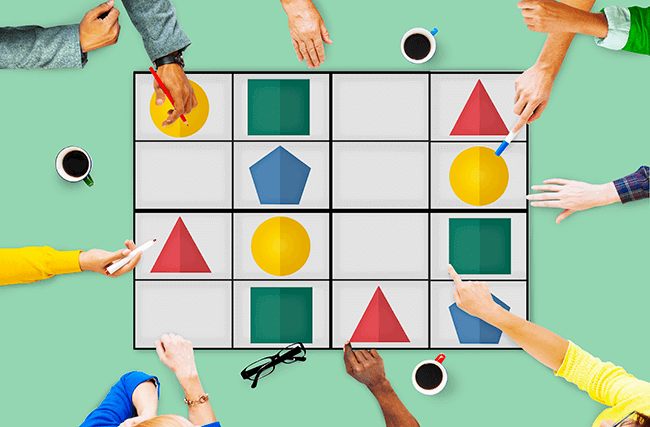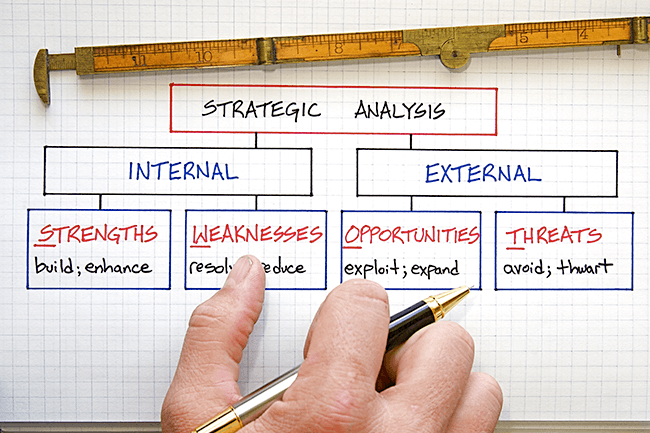The Ultimate Guide to Unique Concept Map Ideas

A concept map can be a reliable tool for planning your projects. It helps you to come up with ideas and solutions even when you hit creative blocks.
And as you generate more ideas, you can determine how they relate to each other to hack your project. Think about a concept map as your planning, teaching, or problem-solving tool.
Are you looking to start a concept map for your next project idea? Click here for the ultimate guide to unique concept map ideas that you will love.
Unique Concept Map Ideas
Concept maps can be a simple personal ideation tool or a dependable collaboration platform bringing hybrid teams together. In most cases, the use case depends on your needs and objectives.
Use opportunities can be endless with concept maps, especially if using a digital whiteboard like HuddleIQ rather than a manual mind map. A digital platform allows you to engage on a large scale.
Even so, it can still be quite intimidating to come up with mind map ideas and get more out of these flexible tools. Here’s an outlook of creative concept map ideas to inspire you when planning your project.
Facilitate Remote Learning
An effective and practical communication platform is critical for effective remote learning. It’s easy to record videos, host webinars, and expect participants to stay engaged. But, many virtual learning systems may not have meaningful learning experiences for long.
Asynchronous videos, for example, may not provide the desired engagement for effective learning. Students will lack the connection with trainers as well as their fellows.
The connection between tutors and learners contributes to success in many learning aspects. Virtual learning demands more connection than face-to-face learning.
A concept map fits in as a more practical virtual learning solution since its design fosters the connection of ideas. It allows tutors to understand their learners’ thinking processes and determine gaps in their grasp of taught subjects.
A practical idea for companies or influencers looking to facilitate remote learning and collaboration is leveraging more on concept maps. Concept maps integrate more visual learning elements, helping every learner to learn better.
Unlike videos, with concept maps, students can see the big picture. By determining the connection of ideas, learners can grasp and recall concepts with much more ease.
Explain a Complex Topic
We’ve all encountered a complex topic or subject that we struggled to comprehend. The harsh reality is that certain tasks are inherently difficult or too complex to decode.
For many leaders, it can be challenging to unpack and explain complex subjects. Most learners generally prefer microlearning rather than complex or highly detailed teaching.
A simple, creative solution to unpacking complex topics is resorting to concept maps. Concept maps promote a constructive method of breaking down topics in a way that boosts learning.
Features like nodes, flowcharts, and graphs within a digital concept map can make it easier to break down complex topics. The systematic connection of ideas and concepts can help learners master and remember concepts.
The various nodes and cross-links can help learners see a connection between concepts and grasp learning material. The more participation or referencing of a concept map during a presentation, the more effortless recall is likely.
Promote Group Learning
One of the creative concept map ideas is using them to support and organize group learning activities. Participants or learners can gang up to decode a subject, which helps to learn.
Since concept maps usually focus on one central idea, group members can build outwards by contributing to one question. The concept map can allow group members to brainstorm answers on a topic or concept.
Students or employees can be divided into small concept-mapping groups and asked to deliberate on a topic. Once students complete their mind map, you can ask them to explain the reasoning behind their ideas. You can ask other groups to critique or offer suggestions about ongoing presentations.
Another way to incorporate concept maps into group learning is to assign each group a topic related to the central concept idea. Allow students to discuss how their question relates to the main topic. In this case, each group’s presentation will be a learning opportunity for the other groups.
Incorporating mind maps into group learning can be an effective way to bolster learners’ engagement. Each learner can become more involved in learning by grappling with the topic and articulating their ideas.
Group learning with mind maps is also an opportunity to promote diverse learning styles. Learners in a hybrid or remote setup can get the opportunity to interact and engage with people from different cultures.
Bring Flexibility Into Your Meetings or Classes
It can be costly if your classes or meetings drag and end without a meaningful conclusion. The time is irrecoverable, and calling for another meeting can disrupt everyone’s schedule.
Meetings or classes need to be flexible and purposeful to be productive. Using concept maps for your meetings, training, and classes can end the rigidity and ensure you get more out of each session.
With concept maps, you can build up on previous sessions by asking participants to contribute remotely. Proceedings become easier to reference and build upon since team members can join in their free time.
Concept maps can allow you to give everyone the heads-up before the actual meeting. Team members have prior access to the day’s schedule, allowing for proper preparation.
Flexibility is an essential part of modern learning. It’s an integral pillar of promoting learners’ or employee engagement. With the rise of hybrid and remote setups, people expect more accessibility.
Concept maps allow you to get your team’s input without disrupting their focus on their passions, family, and hobbies. Learning or attending a meeting at their own pace allows them to be more productive.
Engage Remote Employees
If you want to boost employee morale, you should give feedback to employees. According to Indeed, clear and action-oriented feedback can boost employee engagement and retention.
Concept maps have developed into an effective tool for gathering and providing 360-degree feedback to learners and employees. The fact that you can gather the input of other stakeholders about the employee allows you to be more comprehensive.
In hybrid environments, you’re less likely to have every employee’s information at your fingertips. Employees work with different teams, managers, and supervisors. So, it would help if you got the correct facts and concept maps during evaluations.
Concept maps can also be a great employee self-evaluation tool. You can get employees to self-evaluate to bring more accountability into the exercise. Employees better understand their remote working challenges and are more likely to set reasonable bars.
Beyond that, performance feedback is an ongoing process. It can be challenging to keep your eyes on remote employees— enter concept maps. This is an effective tool to maintain engagement with remote employees and ensure they don’t get disconnected from work.
Figure Out a Strategy
How will you solve a looming problem, develop a winning product or overcome your competition? Every step in building a solid business calls for a winning game plan.
But developing a winning plan is easier said than done. The strategizing part can be overwhelming if you don’t have a systematic process to gather ideas and solutions.
Since concept maps focus on connecting ideas and solutions, they can help you engineer compact strategies. Since everyone references one central theme, generating relevant ideas is easier.
The business world is full of challenges. Ironically, there are a few tricks and ideas to resort to for a creative boost. You often can’t sleep on a problem as you need a solution as fast as possible.
At Huddle IQ, we’ve learned that using a whiteboard is a creative way to create quick solutions for any challenge. Concept maps allow us to break down complex challenges and practical solutions from the sea of generated ideas.
Brainstorm Ideas
The most popular concept map idea is brainstorming. Concept mapping is a visual brainstorming technique to expound on or break down a topic.
As a brainstorming tool, concept maps can help individuals and groups come up with a boatload of ideas and solve complex problems. In this case, you can encourage participants to come up with ideas, usually spontaneously, and add them to your concept map.
The brainstorming process encourages participants to get creative thoughts flowing without disruption. At the end of a brainstorming session, the group or leader chooses a solution after thoroughly discussing all ideas.
Brainstorming encourages outside output. All team members or learners get a chance to propose their ideas without fear of someone shooting them down. It usually allows taciturn participants to speak and offer managers more options.
The process can destroy routine in companies. Since existing solutions may not be practical, managers can discover new ways of doing things. A brainstorming session can unearth more answers, reveal gaps and offer improvement opportunities.
Brainstorming can be a solution to make learning more engaging or build a team atmosphere at your workplace. Learners can gain an opportunity to participate actively in classes while employees can feel part of the team.
Assign or Delegate Tasks in Your Project
Effective task management involves a lot of delegation. Concept maps can promote effective delegation by giving managers an easy way to assign and track tasks.
With a concept map, you can break down a project into tasks and assign implementation to your members. Each task can comprise a list of activities needing implementation for the task to be completed.
You can also rank tasks based on priority to make it clear how the tasks relate to each other to your team. The visual structure of a concept map allows you to track progress and demand accountability from your team.
Task management with concept maps can be an excellent tool for promoting collaboration and enhancing client communication. Members can see what you expect, while clients can watch progress and get all the project updates remotely.
Develop Your Business Model Canvas
Your best model canvas is a description of your business concept. It’s a strategic tool helping you and your partners see your business’s visual representation.
The typical way of developing the BMC is by using templates. Many managers will brainstorm on the BMC building blocks and lay out the model on a template.
A modern and creative way to create the BMC is by using virtual whiteboards with visual diagramming tools such as concept maps. This allows you to visualize your model and ask your managers to contribute their ideas without limitations.
Your BMC is your business roadmap and calls for strategic ideation and research. You’ll build a more relevant BMC when you can get your managers to ideate on a single platform.
When creating your BMC using Huddle IQ, you can invite your managers to collaborate using a shareable link. After completing it, you can show it to your remote partners without any constraints.
Promote Cross Learning
Concept mapping ideas are an opportunity to promote cross-learning in the workplace. Different departments can brainstorm, and individuals can understand how their roles fit into the company.
A concept map brings together various stakeholders and leaders within the company, promoting cohesion. This promotes communication, and it can be a chance to break tension where feuds exist between departments.
A concept map creates an open ideation environment that can make team members interact more and gain more exposure. The increased visibility can bolster individuals’ confidence and help leaders discover future leaders.
Tackling interdepartmental problems using concept maps broadens the ideas pool. You can quickly find solutions to plaguing problems when diverse teams gang up to ideate. A bigger pool of ideas will empower each department and promote innovation.
Another benefit of interdepartmental concept mapping is shared knowledge and experience. Team members learn from their peers and understand the organizational structure.
Get More Concept Mapping Ideas
Concept map ideas are suitable for planning projects or managing thinking and brainstorming tasks. They provide an organized way to gather and arrange ideas related to your project.
Once you embrace concept maps when planning your projects, you’ll discover more ways and ideas to use them. A concept mapping tool like Huddle IQ can become your ultimate ideation and brainstorming tool. Get started for free today.














